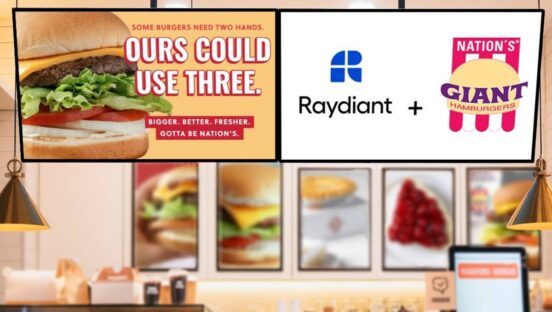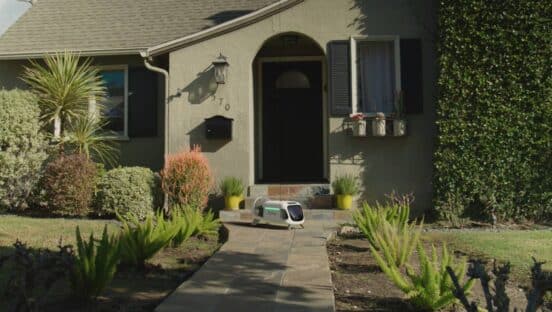Any time Jake Freed buys a bowl of ramen in Japan, he does so with very limited human interaction. He simply walks up to a vending machine, selects his order, pays, and the machine spits out a ticket.
“I hand someone my ticket, my food comes out and that’s it,” he says. “It’s so streamlined and easy.”
Freed, the founder of Shiba Ramen, believes this model is the future of his own California fast-casual ramen concept. More broadly, he sees vending as a huge opportunity for American restaurateurs, who are struggling against a tight labor market, rising wage pressure, and, in many cases, local minimum wage and labor mandates.
“It’s something we talk about a lot. They’ve been doing it in Japan like this for decades,” Freed says. “I don’t know why we don’t have anything like that in the U.S. And given the cost of labor, which keeps going up and up, I would love it if we did.”
In the U.S., vending is still largely relegated to cheap eats and snacks like candy, coffee, soda, and cold sandwiches. But Freed thinks consumers would adopt a more sophisticated approach to vending. After all, they already use automated terminals for renting movies, making banking transactions, and, increasingly, ordering food at limited-service restaurants.
Shiba Ramen already offers kiosk ordering at one of its two California locations. Regular customers don’t flinch at ordering and paying right at the machine, but Freed says new customers often need some convincing—particularly those who are unfamiliar with ramen. Still, he thinks his concept is moving toward an express model styled after vending machines with the main driver being wage pressure.
“It’s the way we probably have to go. As soon as the logistics are in place and as soon as customers feel comfortable, this is what we want to do,” he says. “Vending machines are where this has to go. It’s just: How do we get there?”
Freed thinks customers would support the move, particularly if operators articulate the correlation between higher wages and higher menu prices. “That’s exactly how I’d explain it. … We want you to keep coming to eat here, we want to keep prices as low as possible, so this is the compromise,” he says.
Farmer’s Fridge has built an entire foodservice concept around vending. But founder and CEO Luke Saunders quickly learned a chain of machines was just as complex as a chain of restaurants.

To make nutritious salads, wraps, and bowls, Farmer’s Fridge employees chop produce and prepare dressings from scratch. Once it’s made, the food must be delivered to 200 locations, all of which need to be stocked daily and kept in working order.
“We have all the same challenges,” Saunders says. “We have very labor-intense products.”
He says many operators still view vending as a novelty, supplementing their core restaurant business the way they would with a food truck. He warns that restaurateurs should understand exactly what occasion they’re targeting before jumping into vending because only certain items translate well into the space.
“Vending can really work in foodservice if the quality of the food is as good or almost better than can be found in a restaurant environment,” Saunders says. “Ultimately, most of the really big [quick-service] concepts are designed around products that actually don’t work very well with vending. The reason we don’t sell a hot cheeseburger is because we could never do it better than someone who that’s all they do.”
Current technology means most vending items must be streamlined, not customized. Automation could usher in a more made-to-order experience, but as Saunders points out, no one has yet cracked the code on how to do that cost-effectively. “People can make a robot to make a hamburger or something made to order,” he says. “But scaling that at the vending level would be difficult because of the cost.”
The new Pizza Portal at Little Caesars looks and functions a lot like a vending machine, but with a pivotal distinction. Instead of placing orders through the in-store machine, customers order their pizza online and then use personalized codes to unlock individual compartments in the tall Pizza Portal warmer.
While it appears like a step toward a more automated experience, it began as a convenience play, not a labor one, says David Gray, senior vice president of strategic initiatives at Little Caesars.
Little Caesars already specializes in speed and convenience—its signature Hot-N-Ready pizzas allow customers to get in and out quickly—but the brand’s streamlined selection can slow down those guests who want to personalize their order. The Pizza Portal helps the customer who wants a pizza topped with peppers, mushroom, and pepperoni to snag a pie as quickly as the customer who walks in to pick up a plain cheese pizza waiting in the warmer behind the counter.
“That’s what we started building toward,” Gray says. “With mobile, a lot of people have mastered how to accept an order, how to build an app, but when it comes to delivery of the product, if you have to stand in line or wait for your food, I don’t know that we’ve saved you much time.”
So far, customers and franchisees have cheered the new technology. Some operators want to see the Pizza Portal go further, allowing customers to purchase Hot-N-Ready products directly from the machines.
Gray believes the technology holds wider potential in and outside of the pizza category. “I don’t think the path we took is exclusive by any stretch,” he says. “If you’ve got a food product, if you can build that platform backward from what the customers want to what’s possible, I think it would have very broad-reaching effects.”












